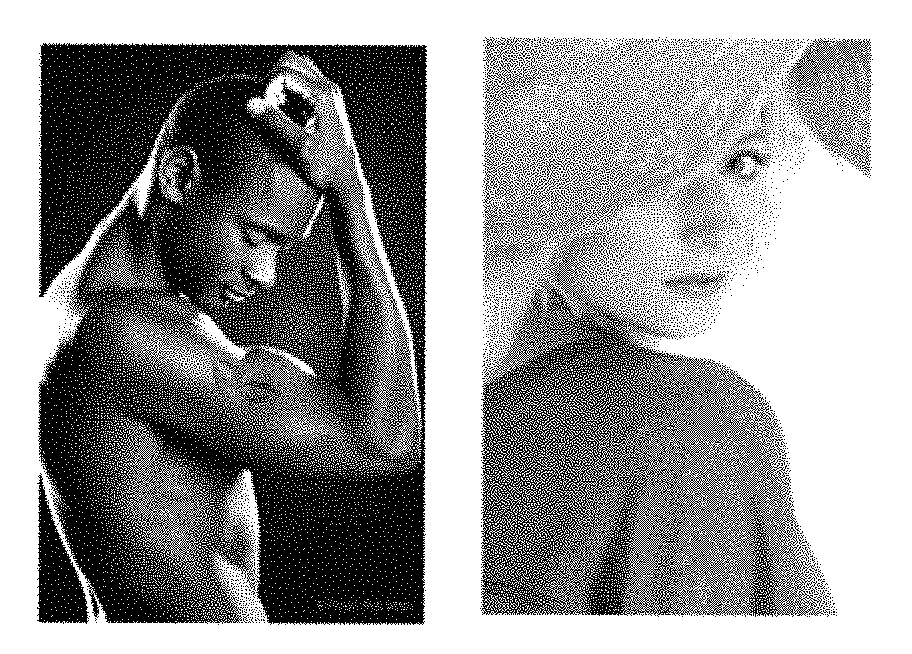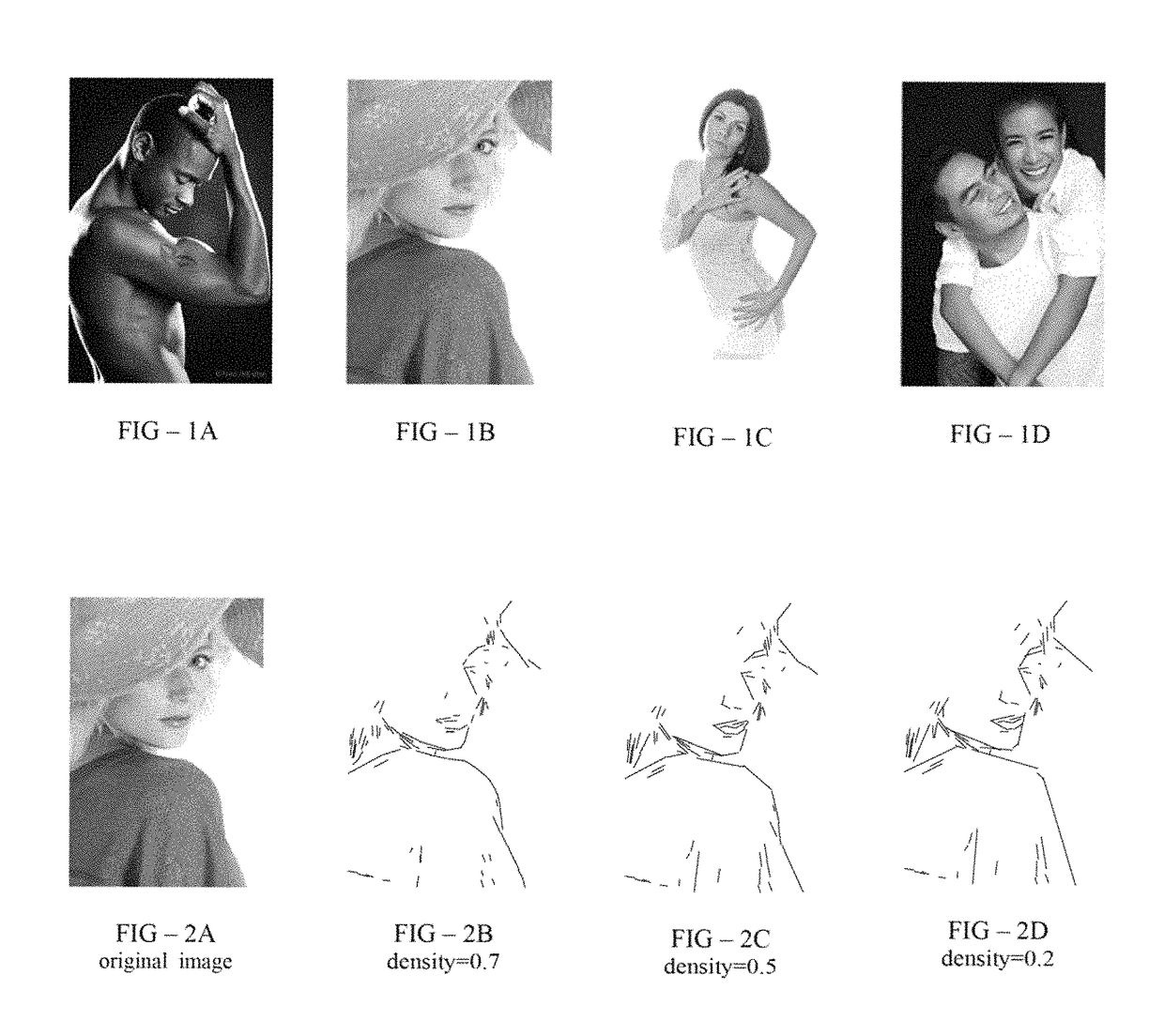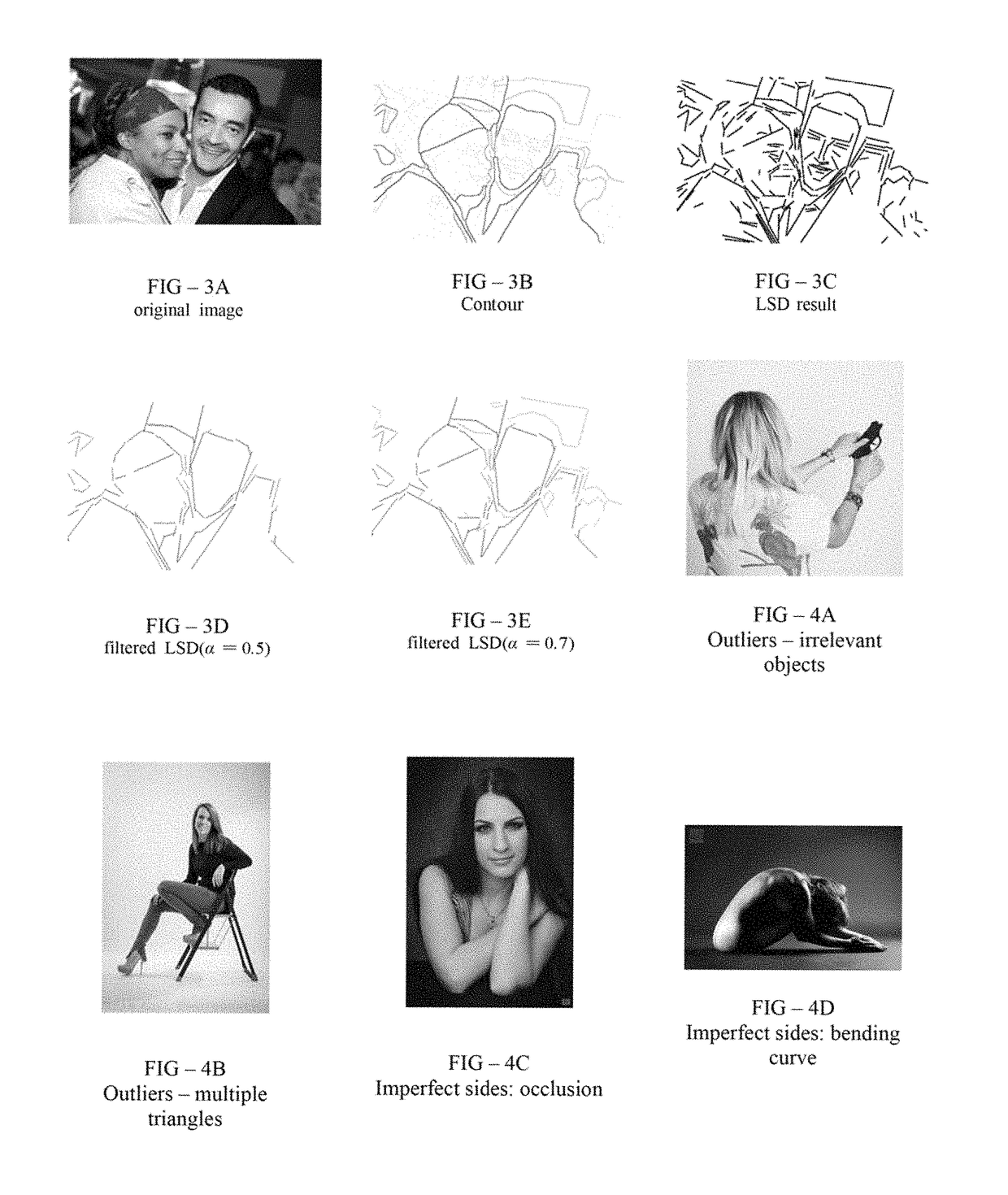Automatic, computer-based detection of triangular compositions in digital photographic images
a technology of triangular compositions and digital photographs, applied in image analysis, instruments, computing, etc., can solve the problems that less experienced amateurs are often difficult to recognize such triangles, and achieve the effect of higher aesthetic quality and interesting compositions
- Summary
- Abstract
- Description
- Claims
- Application Information
AI Technical Summary
Benefits of technology
Problems solved by technology
Method used
Image
Examples
example
[0066]To help amateur photographers and to evaluate the performance of our triangle detection system, we constructed a dataset by collecting 4000 professional photographs from Flickr. We use the key word “studio portrait” for search because studio portraits are often taken by professional photographers who can use the triangle techniques skillfully and embed various triangles in their works. Four examples of portrait photographs which use triangle techniques are shown in FIGS. 1A-1D.
[0067]FIGS. 6A-6L present detected triangles with different continuity ratios and total ratios. “CR” stands for “Continuity Ratio” and “TR” stands for “Total Ratio”. The thresholds for both ratios are empirically set to 0.25. As one can see, triangles with high continuity ratios are more easily recognized than those with low continuity ratios. However, many triangles are embedded in one image, and some of them can be easily overlooked by amateurs. Our goal here is to identify all potential triangles from...
PUM
 Login to view more
Login to view more Abstract
Description
Claims
Application Information
 Login to view more
Login to view more - R&D Engineer
- R&D Manager
- IP Professional
- Industry Leading Data Capabilities
- Powerful AI technology
- Patent DNA Extraction
Browse by: Latest US Patents, China's latest patents, Technical Efficacy Thesaurus, Application Domain, Technology Topic.
© 2024 PatSnap. All rights reserved.Legal|Privacy policy|Modern Slavery Act Transparency Statement|Sitemap



